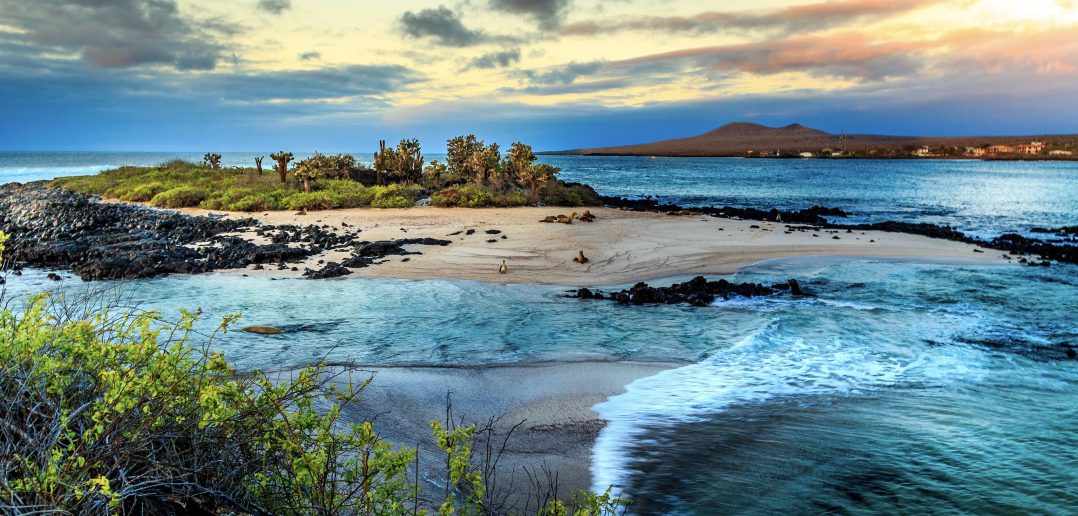Sometimes the smallest creatures can have the biggest impact. Think, for example, of how often you hear about people’s gut microbiomes and their outsized impact on overall health.
Now zoom out to a much larger ecosystem and you'll have an idea of what a team of SAS analytics volunteers was tackling when they set out to model the phytoplankton ecosystem in the Galapagos Islands in partnership with researchers at the UNC Center for Galapagos Studies.
And while phytoplankton might not sound like the most exciting thing to study given the many exotic animals of the Galapagos, these microscopic bacteria and algae are arguably the most powerful organisms in the ocean.
“They are the base of the food chain, so everything in the Galapagos depends on the phytoplankton distributions and abundance,” says UNC-Chapel Hill professor Adrian Marchetti, whose lab studies the ecophysiology, biogeochemistry and genomics of marine phytoplankton. “And they are the canaries in the coal mine – when there are changes to the ocean, the plankton is the first to respond to that because of how sensitive they are to the environmental conditions that promote their growth.”
On top of the fact that they kickstart the food chain through photosynthesis, they are also responsible for generating half of our planet’s oxygen. All the trees in the world, including rainforests, produce just 25-30%. Once again: tiny organisms, pretty big deal.
The quest for more and better data
The project goal was to map and model changes in the phytoplankton ecosystem around the Galapagos, a unique environment due to upwellings of cold water that bring nutrient-rich water to the surface.
The greatest challenge was a relative lack of data. Water samples were taken over five years but only annually during cold season, essentially serving as snapshots in time and primarily used to determine what species of phytoplankton were present. However, this data was not able to capture changes in oceanographic processes over time, progress of the ecosystem or seasonal variability, making modeling more challenging.
The researchers knew that environmental modeling becomes a lot harder without that long-term regularly sampled data but hope this project might change that. SAS data scientist Gabriel Tarrason Risa, who led the team’s modeling effort, believes the work they have done could help Marchetti’s team raise more funding toward collecting more robust data in the future.
“I think that would be probably the most valuable thing that we can do with this data set beyond just the fact that we're learning how to model ecosystems,” Tarrason Risa says. “Doing this sort of thing is unique and extremely expensive, and there is no commercial pressure to do it because we’re not pricing in the damage that we do to the environment, so there's no money to be made.”
A fantastic teaching tool
One part of the project Marchetti and UNC graduate student Prisca Lim are particularly excited about is having a public-facing web presence for the visualizations of the modeling work, calling it a “fantastic teaching tool.”
Not to mention its appeal in spreading more knowledge about the importance of phytoplankton to the world.
“If you think of the Galapagos Islands and you knew nothing about them, and you didn't know about the ocean currents and whatnot, you would assume it's one very cohesive place,” Lim says. “But to see such differences happening from east to west and within the environmental parameters within the phytoplankton community, I think that's just really cool information.”
Tiny organisms and the big picture
This project is, in a way, about more than phytoplankton. By mapping how environmental features affect them, one can model how climate change will impact the overall ecosystem since they are the foundation of the food web for marine life.
The aim is to build algorithms that can map the composition of microbial ecosystems – whether water, soil or animal – and model how environmental features affect them. By doing so, we may in turn tune these ecosystems to better serve human ends, such as improved health, farming yields and environmental stewardship.
“I think it's underappreciated how important these ecosystems are to the way we live and the way everything around us has been built meticulously over time,” Tarrason Risa says. “Now, with data, we can get a level of understanding that previously eluded to us. And with intelligent interventions, we can mitigate the worst impacts climate change will likely have on very vulnerable ecosystems worldwide.”

